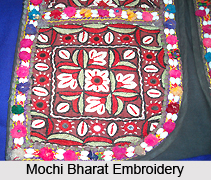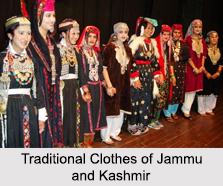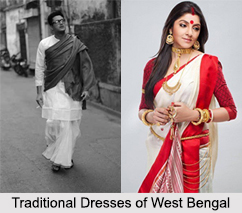 Mochi Bharat or leather embroidery is a style of embroidery that is common to most parts of this region. Mochi Bharat was actually developed to ornament leather objects and is usually created on shoes, animal saddles and trappings. In addition, gold and silver zari is greatly employed on accessories like leather belts, bags and wallets.
Mochi Bharat or leather embroidery is a style of embroidery that is common to most parts of this region. Mochi Bharat was actually developed to ornament leather objects and is usually created on shoes, animal saddles and trappings. In addition, gold and silver zari is greatly employed on accessories like leather belts, bags and wallets.
Usually, soft leather is used in this type of Rajasthani embroidery as it is easy to work on. Lately, however, Mochi Bharat style of embroidery has also found its way into the decoration of textiles like cotton, silk and velvet. Rajasthani women are often seen in a ghaghra and choli ornamented with this style of embroidery. Mochi Bharat is employed through fine chain stitch. Simple line patterns of leaves and flowers are created in zari thread. In the villages, bolder patterns are preferred, where the entire surface is covered with brilliant colours and the design is highlighted through contrasts. The design is often cut out on paper and then pasted on to the surface to guide the embroidery. In other cases, motifs are block-printed on the material with fugitive dyes, before it is embroidered.
The artisan of Rajasthan uses the ari, an adaptation of the cobbler`s awl to implement the embroidery. The ari has a slash incised just above its point to form a hook that looks like a crochet needle. The hook pierces the material and loop embroidery of thread is drawn up. Repeated hooking and pulling of the thread forms a chain stitch, which is used for outlines and a backstitch is seen on the reverse. The motifs are filled up with satin and herringbone stitches. Couching process is also used in some portions of the fabric.
Sometimes, silk floss and cotton threads are employed for Mochi Bharat style. When done on a juti, the middle of the shoe upper is treated as a division for the pattern and a mirror image embroidered on either side. The adaptability of the chain stitch allows the artisan a free hand in the design. As a result exquisitely rendered examples of intricate motifs of birds like parrots and peacocks can be widely seen in this style of embroidery. There are two types of religious embroideries in Rajasthan, the pichvai and Jain embroidery, which are executed in Mochi Bharat style.
Pichvai style is pictorial and narrates a legend or an incident from the life of Lord Krishna. Richly coloured cotton, satin or velvet have been used for making these altar clothes. In keeping with the changing seasons, velvet and satin pichvai are used in winter, while cotton is hung in the summer months. Usually, silk or cotton threads in bright red, green, yellow and orange as well as darker shades are used for embroidering a red, purple, blue or white ground. The face of Srinathji, an incarnation of Lord Krishna, is always imprinted in blue with black shapes. In patchwork pichvai, green, yellow, black and white threads are embroidered on the bright red background, the whole work being offset with an outline of white cord. The designs worked on pichvai select and depict events from the Rasmandala, Krishnaleela and Gokulvana, all epics on the life of Krishna.
The embroideries of Mochi Bharat of Rajasthan also reflect the ideology of Jainism. Satin fabrics in red, indigo, blue or violet are used as a base and are embroidered with silk threads in colours of red, yellow, white, green and blue. It is not uncommon to find Mochi Bharat embroidery embellished with gold and silver metallic threads. The images in such embroider)` depict themes based on Jain philosophy, such as the mandala. The mandala is a representation of Jain beliefs and concepts, depicting the Lord Mahavira as the centre of the Universe, surrounded by the gods and goddesses in the heavens. Pali, Jaipur and Churu continue to be the finest centres of Jain embroidery.
The master weavers, dyers, printers and embroiderers of Rajasthan are the custodians of a supple yet fragile tradition. They have provided permanence in the history of textile design, creation and ornamentation of Rajasthan. Modernisation has made both beneficial and, at times, detrimental inroads into their craft. In order to sustain any craft and maintain its quality, it is important that the product be well marketed and economically feasible for the craftsmen. Financial incentives are important if the quality of the traditional crafts that is to be maintained. Above all, the craftsmen must be accorded their due recognition and respect for preserving these rare and precious crafts of Mochi bharat and keeping alive our rich and colourful heritage.





















